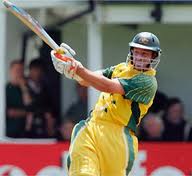World Cup 2011, 20th March, India Vs West Indies
By Vikram Afzulpurkar
Are players’ personal targets a bane to the team? Should they be ‘handled’ differently?
 |
| How many balls are being consumed when a batsman is one stroke away from a century? Are the missed runs affecting results? |
Records, bah!
The Indian obsession with milestones, thankfully mostly with the spectators, continues. Everybody was baying for Tendulkar’s 100th century in the game against the Windies at Chennai, even before the innings had resumed. On the contrary, the shrewder but smaller flock heaved a sigh of relief when the master got out early – apparently India boost their chances of losing by 70% whenever Tendulkar scores a century!
Live Another Day
Not that the statistically suave folk mind Sachin achieving the landmark. They’d rather he did it in a more inconsequential game outside of the World Cup. Of course this match was marginally inconsequential to both teams who’d already qualified for the knockouts, but then, you don’t want to risk losing your tempo in a once-in-four-year World Cup. Well, India won the match.
Milestones to the Winds
Anyway, the topic of discussion is why don’t players, maybe in a more public perspective, forget about milestones? The best milestone would be the victory achieved in that match, no matter how inconsequential the match itself. Why can’t a player, people and a whole nation recognize the times when a player got out at 99 trying to force the tempo? Signify that effort as a milestone.
Contradictions
We’re doing contrary analyses these days. We universally accept the fact that every run needs to be saved while fielding and one in ten matches can be potentially won by a single run. So why not forsake the milestone?
How to Approach a Milestone
Why can’t a player actually attack when he’s at the milestone, therefore, if he gets out there will be no complaint that a ‘few balls were consumed.’ Of course, if he gets away with it, his personal fifty or hundred too would have been achieved and his side’s momentum untouched.
Run Rate Dilemma
 |
| Commentators put too much archaic emphasis on 'run rate' |
Only J P Duminy has been forthright and related to the press that he wasn’t bothered about his milestone (he was dismissed in the 90s) in a recent World Cup match. Then, there is yet another obsession among the public and commentators, that of the run rate. Agreeably, a run rate of 8 to 10 is considered achievable at the end of the innings (last ten overs) but too much thought is being is being put into it.
 |
| Only JP Duminy has declared he is not bothered when a hair breath from the landmark! |
Outside Influences
Twenty20 cricket, whose influence and strategies have percolated to 50-over cricket, has taught us that none of the targets considered unachievable, yet worth of discussion, in the period before 2007, are like that anymore. 2007 represented the dawn of a new era with the global accepting of the T20 format and the enhanced power and skills of those playing it.
Determinants of the Chase
Momentum, How the Pitch is Playing Currently and Wickets in Hand can be the only three determinants for whether a team is on track for a potential victory. Michael Hussey needed 18 runs off the last over to win the semi-final for Australia in the T20 World Cup of 2010. The whole world believed it was ‘possible’ yet distinctly unlikely, but the reverse was proven.
Magnify
 |
| Michael Hussey's winning last over effort in the Word Cup T20 semis, 2010 showed that ideal run-rate theories can be thwarted. |
Well, let's multiply Hussey’s ‘challenge’ and the 'resources available' (balls) by a factor or three to construct an imaginary one in an ODI or T20 innings. Here, it’s unrealistic to expect to get 54 runs off 3 overs. Therefore, let’s assign 10 runs as 'achievable' off each of the other 2 overs. 38 runs needed off 3 overs. Outside reach….?
Outside the Punter’s Reach?
Commentators are likely to say that a rate of 12+ is unlikely to be achieved? The ball-to-run comparers think “38 in 18 balls” “is closer to 40 runs” and therefore, ‘outside the realm of possibility.’ Naysayers! Sure, we need one ‘big over’ of about 18 runs, but largely, the thinking of most analysts remains rooted. One wonders if this affects the teams’ thinking also.
Well, Hussey showed it does not. So, isn’t the breathable ozone layer the limit, if not indeed the sky? Message to the world - “Think high, think ‘sky’!”
No comments:
Post a Comment